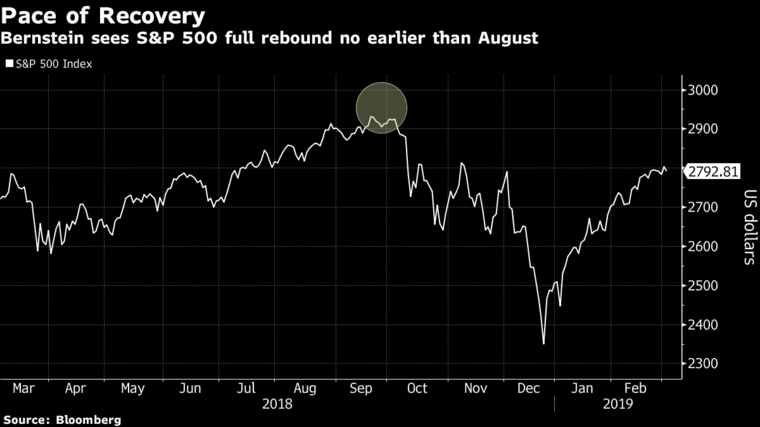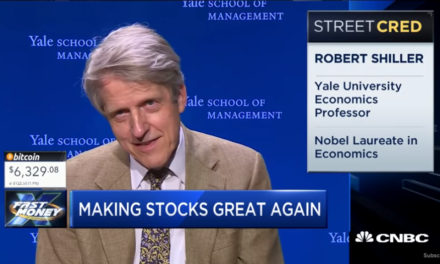With equities crushing expectations in 2019 after a volatile fourth quarter in 2018, everything is rosy on Wall Street, right?
Not so fast, Sanford C. Bernstein & Co. strategist Noah Weisberger says.
The S&P 500’s return to September’s record highs will take longer than most market forecasters are predicting, even though its already within 5 percent of September’s record 2,930.75. According to Weisberger, the cyclical-led rebound has “mostly exhausted itself” and further gains will be hard to come by given a worsening slowdown in the global economy.
The firm’s model points to August for when the market completes its recovery. The S&P 500 closed Wednesday at 2,772.

Per Bloomberg:
“While the slowing story is not new, the recent data show signs of increasing deceleration,” Weisberger wrote in a note dated March 4. “With slowing well entrenched, the cyclical leadership that has dominated year to date may be hard to sustain on the long slog back to old highs.” That’s a less bullish assessment than others that have emerged lately. Last week, UBS Group AG strategist Parker predicted that a more dovish Federal Reserve and a possible U.S.-China trade deal will extend an economic recovery, lifting stocks to new highs by the end of June. JPMorgan’s Marko Kolanovic on Feb. 14 said the S&P 500’s rally could last through May. Evercore ISI’s head of technical analysis Rich Ross this week said the market is in a strong position to break out and make a run toward 2,900.
That’s a less bullish assessment than others that have emerged lately. Last week, UBS Group AG strategist Keith Parker predicted that a more dovish Federal Reserve and a possible U.S.-China trade deal will extend an economic recovery, lifting stocks to new highs by the end of June. JPMorgan’s Marko Kolanovic on Feb. 14 said the S&P 500’s rally could last through May.
Evercore ISI’s head of technical analysis Rich Ross this week said the market is in a strong position to break out and make a run toward 2,900.
Bernstein’s macro indicator, tracking data from consumer confidence to retail sales to manufacturing, is pointing to a growth rate of 2.2 percent, down from 3.6 percent two years ago. Moreover, the model shows a 65 percent chance that the U.S. economy will re-accelerate instead of contracting, compared with 80 percent in January.
The S&P 500 has hit a wall near the 2,800 level lately after rising in all but one weeks this year. Boosted by industrial and technology shares, the index added 11 percent in January and February for the best start of a year since 1991.
Investors should differentiate among companies as the gap in stock returns stood at the highest level in three years, Weisberger said.



